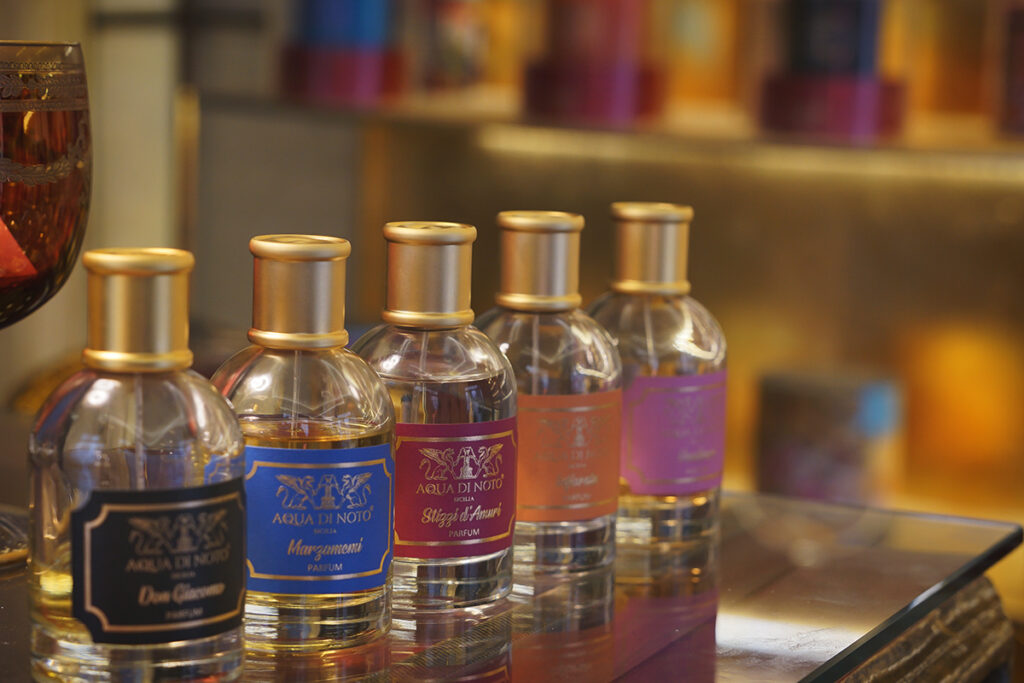
Discovering Noto, the Baroque Jewel of Sicily
This post is part of the Chasing The White Lotus series: Your Insider`s Guide to Perfect Sicilian Holidays. You can check the other posts of this series here! (INSERIR LINK PARA OUTROS POSTS DA SERIE)
Introduction:
If you’re looking for a summer getaway that’s both trendy and timeless, look no further than the Italian island of Sicily.
Thanks to the recent popularity of HBO`s hit series “The White Lotus”, which was filmed in various locations across the island, Sicily is quickly becoming one of the hottest travel destinations of the year.
The perfect Sicilian travel itinerary includes many cities along the coast and the countryside, so you can enjoy Sicily`s crisp turquoise waters and idyllic beaches, its historical architecture, and its volcanic vineyards.
I’ve been holidaying in Sicily for years, before all the hype, I put together a whole series of posts about this paradisiac island. And I can guarantee: If you’re planning a trip to Sicily this summer, you won’t want to miss the charming city of Noto.
Noto is a small city located in the southeast of Sicily, known for its stunning Baroque architecture and its UNESCO World Heritage site status. And while the White Lotus tv show features many of the region’s stunning landscapes, Noto is a hidden gem that’s well worth a visit on its own. You can visit Noto as part of a day trip from Taormina or other coastal cities like Marzamemi, or you can spend one night there.
Here’s everything you need to know about this beautiful destination:


Table of Contents:
- A brief history of Noto
- The perfect 1-day Noto itinerary
- On your table – Drinking and eating in Noto
- Wine tasting in Noto
- Day trips and nearby destinations
A brief history of Noto:
Let’s start with a brief history lesson: Noto is a small town in the province of Syracuse, located in the southeastern corner of Sicily. With a long and complex history, Noto, like many cities in this idyllic but actively vulcanic Italian Island was shattered by a massive earthquake in 1693 that devastated the region.
Originally settled by the Siculi, an ancient people who inhabited Sicily long before the arrival of the Greeks and Romans, the city was later on conquered by the Arabs, who left an indelible mark on the city’s architecture and culture.
After the tragic earthquake, the city was subsequently rebuilt in a stunning Baroque style that has earned it its UNESCO World Heritage site status thanks to its stunning architecture. Strolling around the town’s winding streets and piazzas, you’ll feel like you’ve stepped back in time to the 18th century.

The perfect 1-day Noto itinerary
Main Things to Do and See in Noto
Noto is a small city, but it’s packed with things to do and see.
The historic center is filled with Baroque palaces, churches, and fountains, making it a delight to explore on foot. Whenever you`re walking, make sure to stop and look up: you will find beautiful balconies, intricate facades, and stunning sculptures throughout the city.
But perhaps the most impressive sight is simply the town itself, with its golden stone buildings and dramatic skyline.
I’ve created an easy but very pleasant walking route so you can explore the city while discovering its main features. It can be done in a one-day itinerary for exploring Noto, so let`s get started:

- You can start your visit with a stroll through the Villa Comunale. This beautiful park is located just outside the city center and features beautiful gardens, fountains, and sculptures, being a great place to relax and enjoy the scenery. During the summer months, sometimes they have a small market where you can find locally-sourced products including handmade ceramics, the most deliciously-smelling soaps, and food like organic honey, cheese, and olive oil.
- At the end of the park, you will arrive at the beginning of the old town, highlighted by a grand arched gateway called “Porta Reale” or “Ferdinandea”. Built in the 18th century, the gateway was designed by the architect Rosario Gagliardi, who was responsible for much of the city’s Baroque architecture. The gateway is adorned with ornate decorations and sculptures, including the emblem of the city of Noto and the coat of arms of the Spanish royal family, who ruled Sicily at the time the gateway was built.
- From the Porta Reale, you will access Corso Vittorio Emanuele. This lively street is the main thoroughfare of the city. It is lined with charming cafes, restaurants, and shops and most of Noto`s more impressive buildings are spread throughout its length.

- Only a 5-minute walk from the beginning of Corso Vittorio Emanuele you will find the Palazzo Ducezio (but hey, no need to rush it, enjoy your walk!). This elegant palace was built in the 18th century and served as the seat of the city’s government. Today, it is home to the city’s art museum, which features an impressive collection of paintings and sculptures.
- Right in front of the palace, you will find one of Noto`s most iconic landmarks: the Noto Cathedral (also known as Cattedrale di San Nicolò). It was built in the 18th century after the original cathedral, which was built in the 14th century, was destroyed by the devastating earthquake of 1693. The cathedral is dedicated to Saint Nicholas of Myra, the patron saint of sailors and travelers. Its Baroque facade is one of the most impressive in Sicily and features a central portal and two bell towers with ornate decorations and sculptures. Also, if you`re a fan of the White Lotus series, you might recognize those stairs!
But don`t just stay on the outside! The cathedral`s interior is as impressive as the outside, with adorned with intricate frescoes, sculptures, and works of art. The nave is flanked by chapels that contain many notable works, including the altarpiece in the Chapel of the Crucifixion, which was painted by the famous Sicilian artist Antonello Gagini.

- It was a hot summer day when I visited Noto, and since it was also lunchtime if you find yourself in this part of the city, you`re in luck: there are plenty of cute bars and small restaurants to tempt you with tantalizing aromas, fresh food and drinks and a well-deserved seat in the shades of its terraces. Now usually, I avoid sitting to eat anywhere near a city`s most tourist areas (an almost assured way to fall into a tourist trap), but I did not have this impression in Noto. Lemocello Spritz in hand, I had a delicious lunch… But more about this later on!
- This area of the city has as many churches and cathedrals as restaurants, I could say. Another one worth visiting is the Church of San Carlo al Corso, one of the city`s oldest churches, built in the 17th century.
- From Corso Vittorio Emanuele, if you walk right, you will reach the highest part of town. Just a few steps up you will find Palazzo Nicolaci di Villadorata, an 18th-century palace for the Nicolaci family, a prominent aristocratic family in Noto. Look for the famous “putti” or cherubs that adorn the balcony. The palace’s interior is equally impressive, with stunning frescoes and painted ceilings that are true works of art showcasing the skills and creativity of the artisans who worked on its construction.
The palace also houses the Nicolaci Museum, which features a collection of paintings, sculptures, and other works of art that provide insight into the history and culture of Noto and the surrounding region.Be sure to take a walk up to the top of the town’s hill for panoramic views of the surrounding countryside.



As I was exploring the city, camera in hand, of course, I noticed that many of the big staircases on the upper part of town were painted by different artists, almost like a modern open-air museum! Curious to find the painted stairs I showed here? They do make for some picture-perfect Instagram shots! Keep walking up and you will find them all around Via Camillo Benso Conte di Cavour.
Shopping in Noto
Truth be told, Noto is not the greatest city for shopping – for that, nothing beats roaming the streets of Taormina`s city center – but me being me, I did find some very interesting things to buy… #sorrynotsorry
Noto’s pride and joy is Acqua di Noto, a unique and exceptionally high-quality product. With only five distinct fragrances and three product lines – perfumes, scented candles, and ambient fragrance – they offer a level of exclusivity and luxury that is unparalleled. I was particularly drawn to the captivating aroma of “Infiorate,” though all of their scents are simply divine. Without a doubt, an Acqua di Noto product makes for the perfect souvenir from your Noto adventure.
https://www.acquadinoto.it/en/


Eating and drinking in Noto
Of course, no trip to Sicily would be complete without indulging in the region’s famous cuisine.
The areas around Noto Cathedral offer plenty of restaurant options with shaded terraces and cozy cave-like interiors, not to mention their mouth-watering Italian food. At lunchtime and also because we still had a lot of walking and exploring to do, I chose the most delicious octopus salad – Insalata di polipo – with orange, light and fresh, but I could not resist having (a couple of) Limoncello Spritz, and if you have never tried it… Just do it. Honestly.



By night, Via Rocco Pirri, situated right in the heart of the city, comes alive with an array of bars and restaurants offering candlelit outdoor seating and cozy indoor spaces. At Dammuso, a charming resto-bar, we indulged in an apericena – a traditional light dinner – of delectable Italian delicacies such as arancini, paired with crisp and locally produced white wine. However, the dining options along this street and its adjacent lanes are plentiful, ranging from intimate and romantic hideaways to lively bars boasting live music.


Some of the must-try dishes and drinks include:
- Arancini: These delicious fried rice balls are a Sicilian specialty.
- Granita: This refreshing semi-frozen dessert is perfect for a hot summer day.
- The famous Modica chocolate, although originally from the neighboring city of Modica – read all about their chocolate-tasting experience here – can also be found in Noto. I visited a chocolate atelier called Sabadì and was amazed by how many unique flavors of chocolate they have.

As you can see, in Noto, you’ll find plenty of delicious local specialties that you can wash down with some local wine, such as the Nero d’Avola, a full-bodied red that’s considered one of Sicily’s finest.
Wine tasting in and around Noto:
Speaking of wine, Noto is a great place to indulge in some wine tasting as well. As mentioned, the Nero d’Avola wine is a must-try, and there are plenty of wineries in and around Noto where you can sample it for yourself. If you’re a wine enthusiast, consider taking a tour of the local vineyards and learning more about the region’s winemaking traditions.
While Noto itself is a charming and picturesque town, there are also plenty of day trips and nearby destinations to explore. For example, just a 15-minute drive away is the town of Avola, Avola a charming city located on the southeastern coast of Sicily, in the province of Syracuse.
It is renowned for its beautiful beaches, historic architecture, and delicious cuisine. Avola is also famous for its production of Nero d’Avola wine, one of the most important red wines of Sicily.
The Nero d’Avola grape is native to Sicily that has been cultivated for centuries. The grape is known for its thick skin, high sugar content, and ability to produce full-bodied, complex wines with intense flavors of dark fruit, spice, and earthy notes. Nero d’Avola wines are typically aged in oak barrels, which adds additional layers of flavor and complexity. They pair well with hearty, flavorful dishes like grilled meats, stews, and aged cheeses.
Some of the top producers in the region include Planeta (the one featured in The White Lotus), Feudo Maccari, and Gulfi. In addition to wine, Avola is also known for its almond production, and you can find many local sweets and pastries made with almonds.






